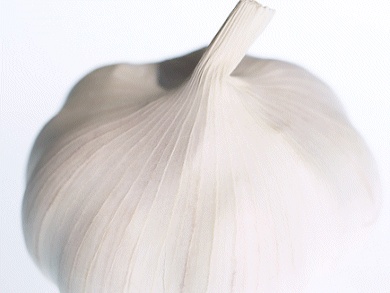Garlic has an antimicrobial effect. Previous studies suggested that diallyl sulfide is key to garlic’s antimicrobial properties by damaging the cell. How this works remained unclear.
Barbara Rasco, Washington State University, Pullman, USA, and colleagues used infrared and Raman spectroscopies to watch key biomolecules in bacteria as garlic attackes them. They invested the antimicrobial effects of garlic (Allium sativum) extract (25, 50, 75, 100, and 200 µL/mL) and diallyl sulfide (5, 10 and 20 µM) on Listeria monocytogenes and Escherichia coli O157:H7
L. monocytogenes was more resistant to garlic extract and diallyl compounds treatment than E. coli O157:H7. Fourier transform Infrared (FT-IR) spectroscopy indicated that diallyl constituents contributed more to the antimicrobial effect than phenolic compounds. This effect was verified by Raman spectroscopy and Raman mapping on single bacteria. Scanning electron microscope (SEM) and transmission electron microscope (TEM) showed cell membrane damage.
Garlic and diallyl sulfide showed more-potent antibacterial activity at room temperature than when refrigerated.
- Infrared and Raman Spectroscopic Studies of the Antimicrobial Effects of Garlic Concentrates and Diallyl Constituents on Foodborne Pathogens,
Xiaonan Lu , Barbara Rasco , Dong-Hyun Kang , Jamie Marie Francisco Jabal , D. Eric Aston, Michael Konkel,
Anal. Chem. 2011.
DOI: 10.1021/ac2001498



